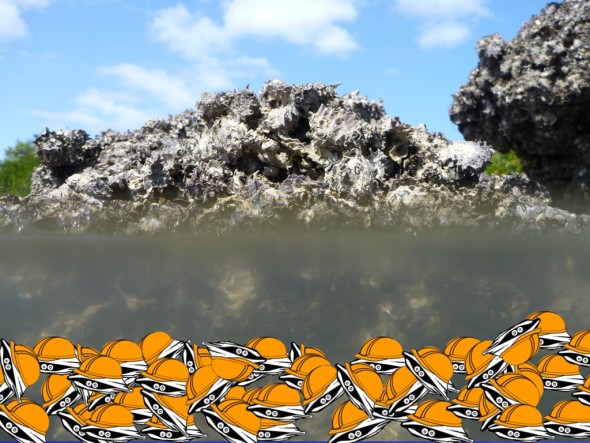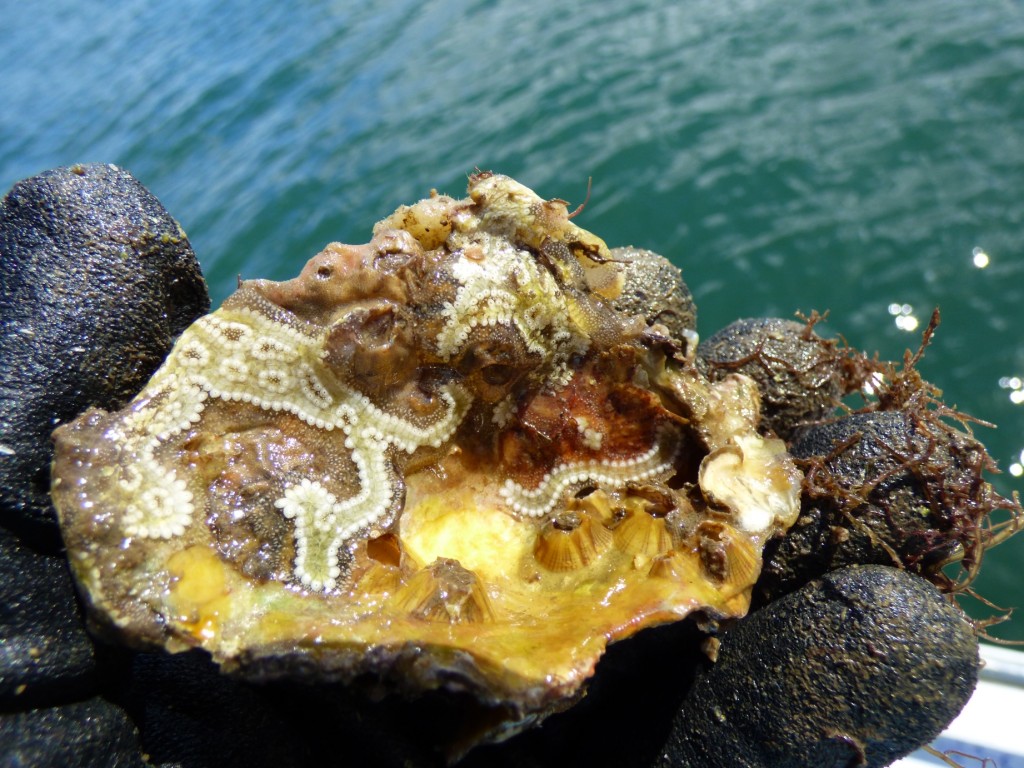
Shellfish reefs (oysters, mussels etc.) are “the lungs” of healthy estuaries, providing various “ecosystem engineering” services including filtering to clean the water, nutrient uptake, shoreline stabilisation and food and shelter for fish and crabs.
However, today less than 5% of historical shellfish populations remain in Pumicestone Passage, due mainly to declining water quality which disrupts their breeding cycle. Pumicestone Passage is under severe stress and intervention is needed to try to prevent further decline.
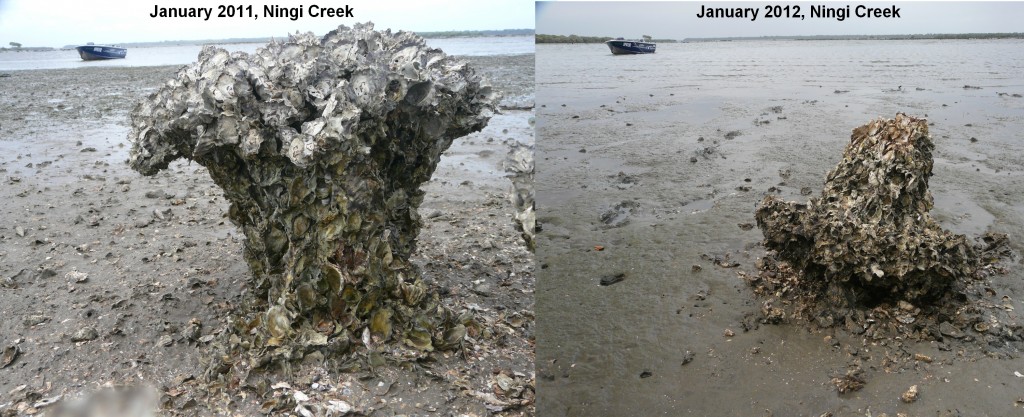
Intertidal oyster clumps at Ningi Ck in Pumicestone passage undermined and degrading into the mud due to recruitment failure.
Loss of subtidal shellfish reefs results in lost fisheries production and nutrient assimilation capacity which then causes other undesirable ecological outcomes such as declining stocks of fish and crabs, and turbid water which reduces survival of seagrasses. This video from the USA highlights the various reasons why we have lost oyster reefs in Moreton Bay, and why we need them back.
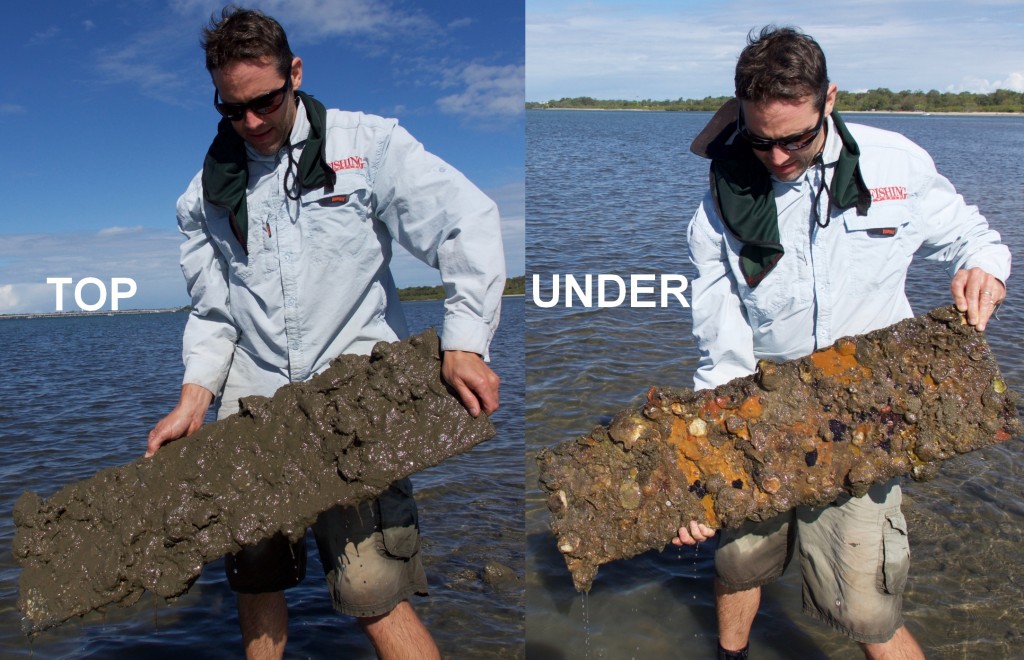
Nutrient loading and excessive sedimentation have choked subtidal shellfish reefs in Pumicestone Passage and Moreton Bay. Intervention is needed if these lost ecosystems are to be restored to regain biodiversity and fish numbers.
Our goal is to scientifically examine the best methods of restoring subtidal shellfish reefs in Pumicestone Passage and quantitate their effects on improving water quality and fish habitat in the Passage and Moreton Bay. Trial shellfish reef modules were deployed into Pumicestone Passage on 12th December 2017 – for more information see our Map and Research Priorities pages. Results have been very encouraging, including a doubling of fish numbers in the first 6 months, and after 30 months we generated over 10 times the number of fish with nearly 4 times the biodiversity compared to pre-installation surveys and a massive 16.4 times more harvestable fish compared to the baseline. While most of these fish are small, as shown by our creek to coast feature, this shows the reef is already a valuable nursery area. Videos show increased fish activity over patch reefs, crate reefs and BESE reef modules compared to non-restored areas. Additional trial patch reefs were deployed with improved fence modules installed in December 2018 to examine if improvements to the original designs are possible. Transects after 8 weeks and invertebrate surveys after 3 months, 6 months, 9 months and 12 months suggest the new trial reefs are securely located and establishing healthy invertebrate populations which include a several species of rock oysters. Our results have mirrored those of successful shellfish restoration trials done overseas with high survival (>75%) and up to 10 baby oysters settling on a single recycled oyster shell after 24 months deployment
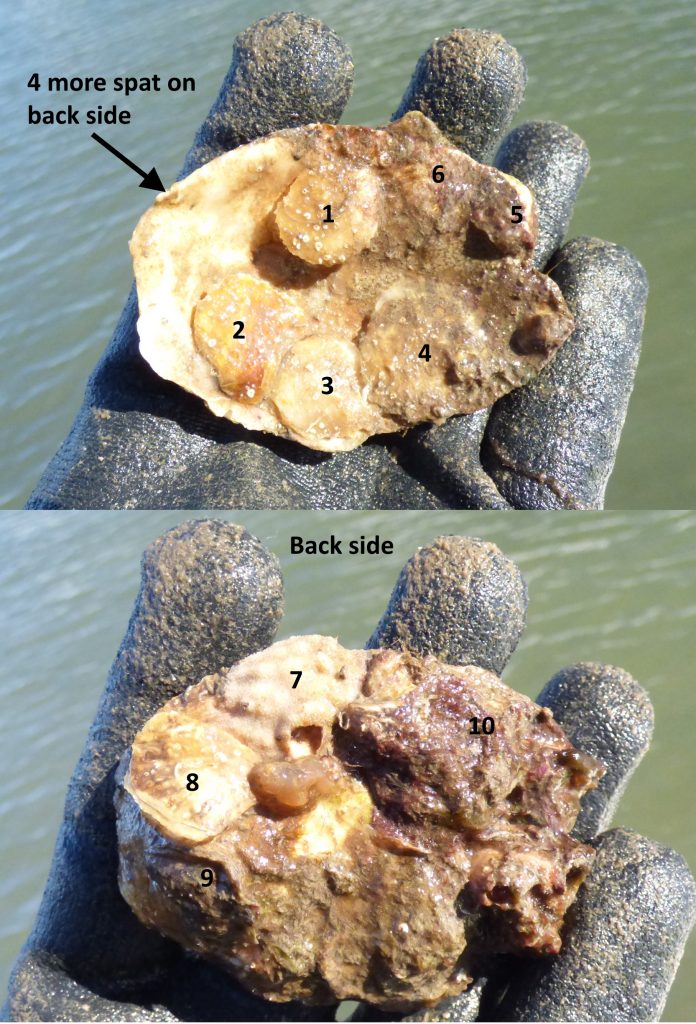
Results of restoration trials after 18 months are promising, with high survival and up to 10 baby oysters settling on each recycled oyster shell placed in Pumicestone Passage.
Short videos of the 3 month old reefs found that fish populations associating with the reefs include whiptails, silver biddies, stripeys, grass tuskfish, blacksaddle goatfish, fan bellied leatherjackets, Gunther’s wrasse, happy moments, moses perch, tarwhine, yellowfin bream, crested morwong, Mullers coralfish, several species of cardinalfish and a juvenile tawny nurse shark. June 2019 fish surveys (done 6 months after the 2018 deployment and 18 months after the 2017 deployment) found that fish species richness had increased further to be 82% higher at the reef restoration site compared to control sites. Similarly, despite heavy fishing effort, harvestable fish abundance had increased to be 128% higher on the reef restoration site compared to control sites, and total fish abundance had increased to 268% higher on the reef restoration site compared to control sites. June 2020 fish surveys (30 months after the 2017 deployment) found species richness continued to increase to over 380% compared to baselines while harvestable fish species increased by 1640% (total number of all fish species increased by 1070%). To help protect the trial shellfish reefs from damage, we ask that water users DO NOT ANCHOR in the trial area, as this can cause damage to the patch reefs in particular, as shown in this underwater drone video.
This is one of several similar projects that have started recently in Australia, for more details on the national situation, see www.shellfishrestoration.org.au or follow the Australian Shellfish Reef Restoration Network at https://twitter.com/ShellfishReefs. For more background information on our local project read the National Environmental Science Program report on shellfish reefs in Southern Queensland HERE, and view the presentation by Dr Ben Diggles presented on World Oceans Day at Bribie Island Library on 30 May 2019. Some earlier media on our project can be found on Radio, TV and in newspapers.
